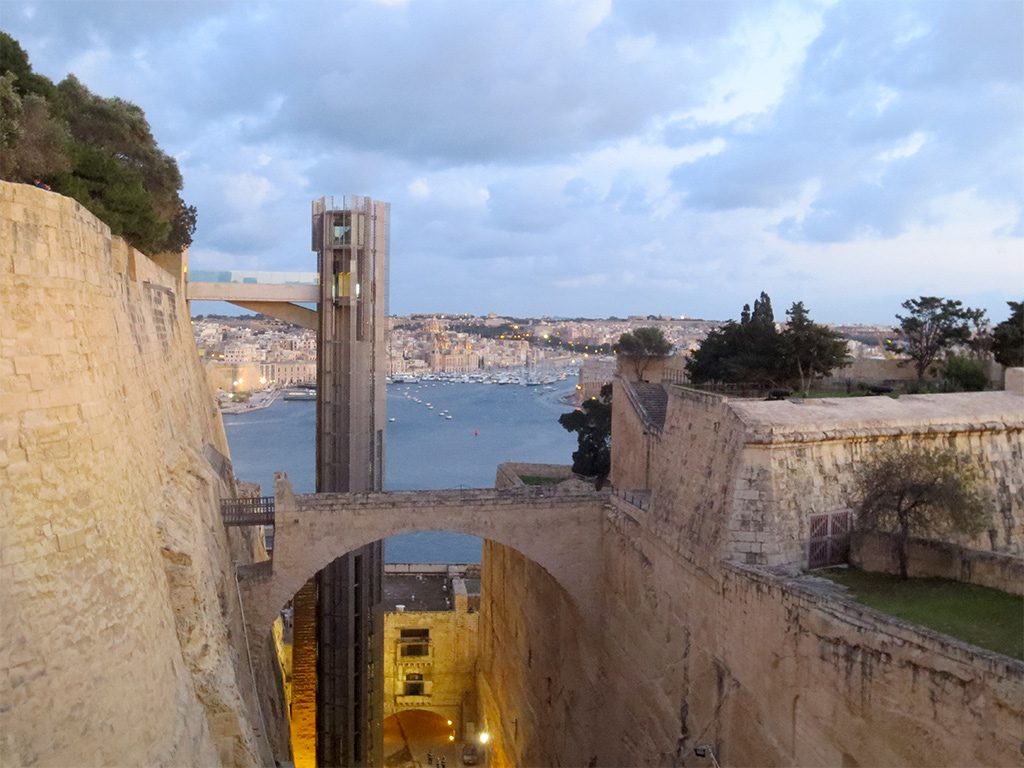
We hopped a short flight from Valencia, Spain to Valletta, Malta. Malta is a small archipelago of islands in the Mediterranean roughly 93 km south of Sicily and 300 km from Tunisia and Libya in North Africa. We’re staying in the capital city, Valletta which we will use as a base to take a few day trips to other parts of the islands.
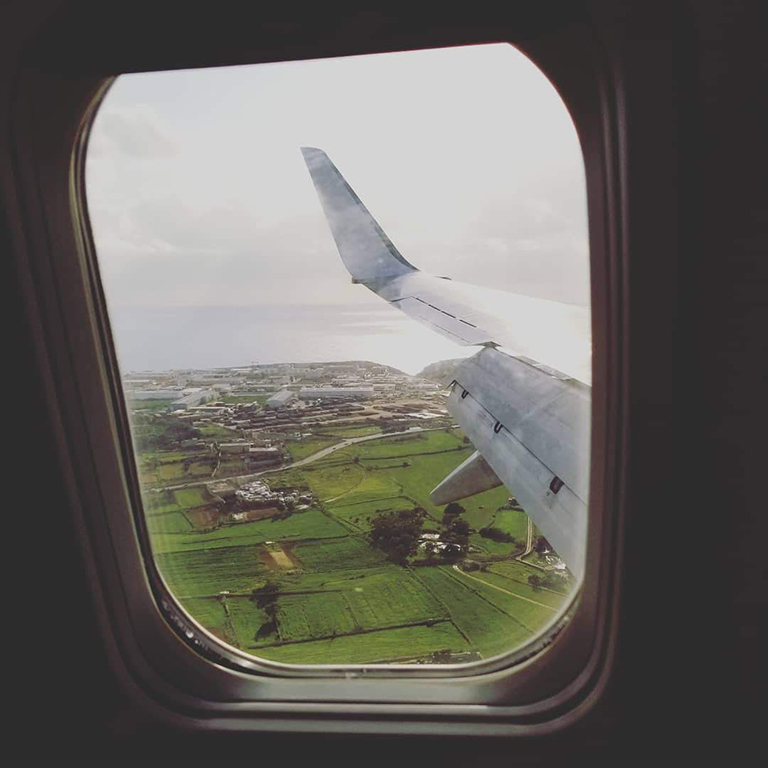
We flew Ryanair, which always feels like a bit of a gamble, but in this case the flight was cheap, short, and uneventful. I enjoyed a gin and tonic on board that cost roughly half as much as my airfare. It was worth it.
Since both Malta and Spain are part of the Schengen Area, we were able to head right to the luggage carousel without the hassle of passing through customs or immigration again. Our holiday apartment management had arranged a driver for us, who was waiting with my name on a sign.
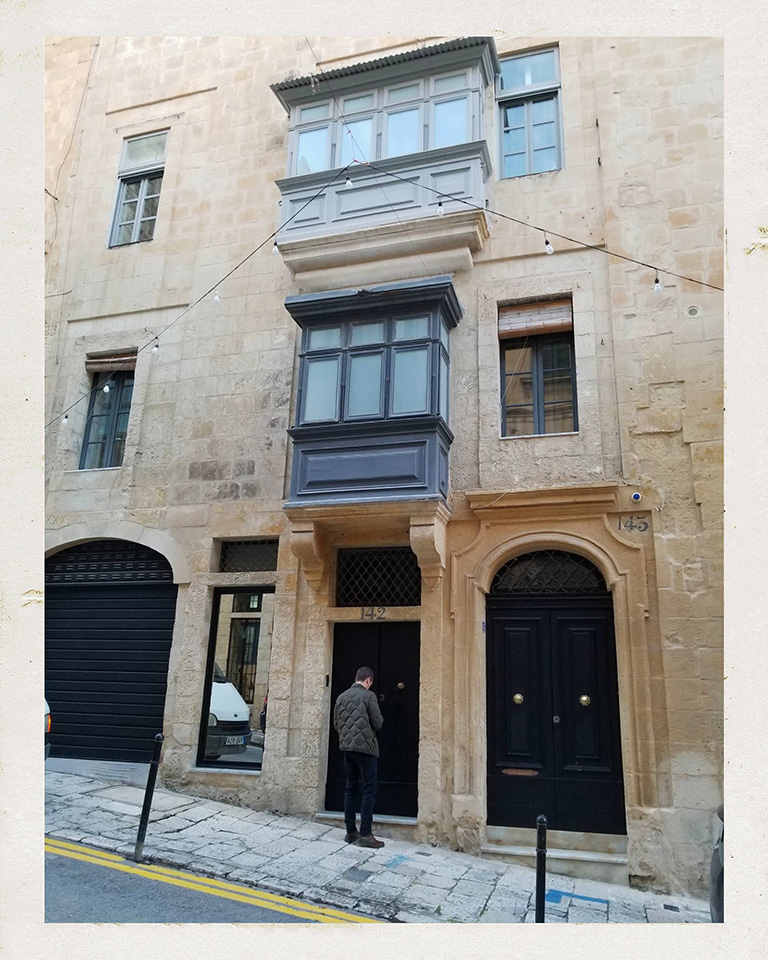
We checked into our fantastically stylish rental apartment that we could only possibly afford at low-season prices (many photos to come in a separate post) and then headed back out for a quick wander around Valletta before the sun set completely.
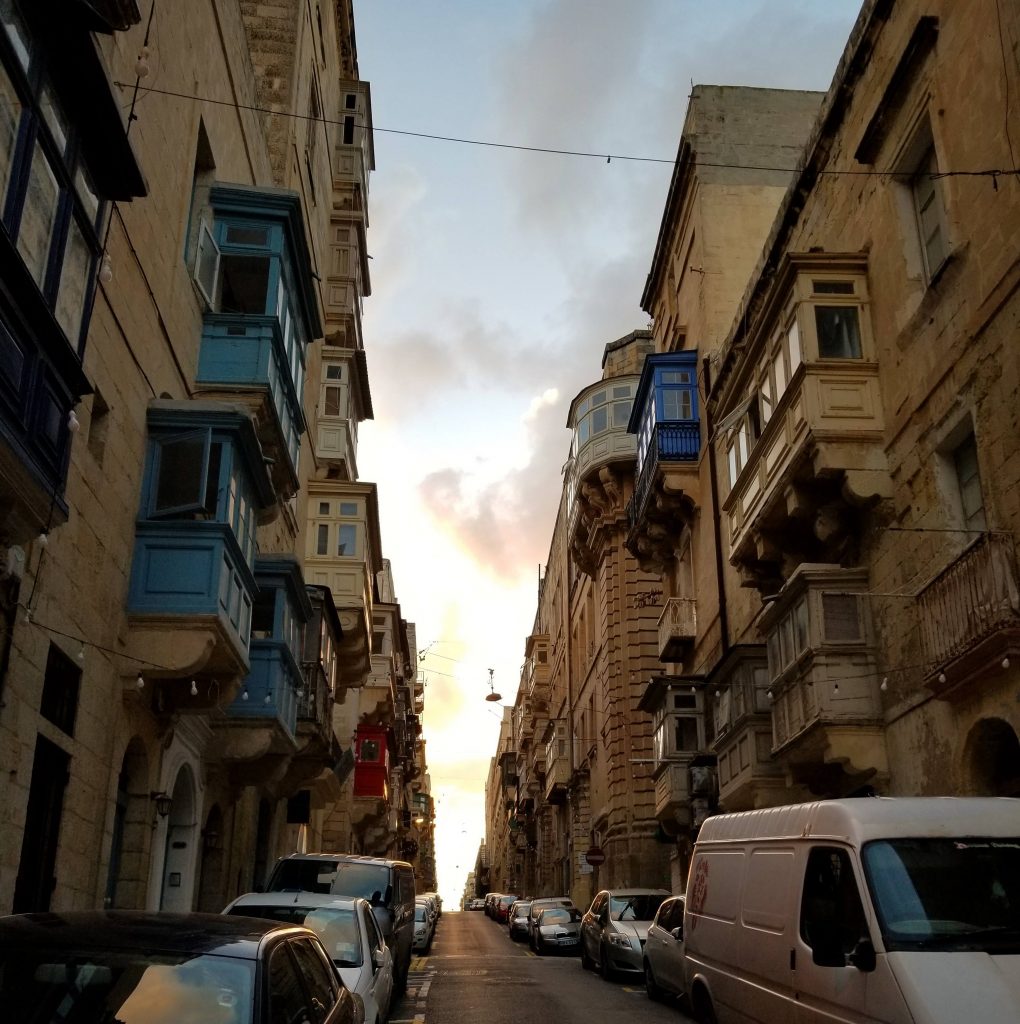
The fortified city of Valletta was planned and constructed by the Knights Hospitaller (aka the Knights of Saint John aka the Knights of Malta) who were given ownership of the islands in 1530. In the core of the city much of the architecture remains intact from the 16th and 17th centuries, save for a few buildings reconstructed after extensive bombing damage in WWII.
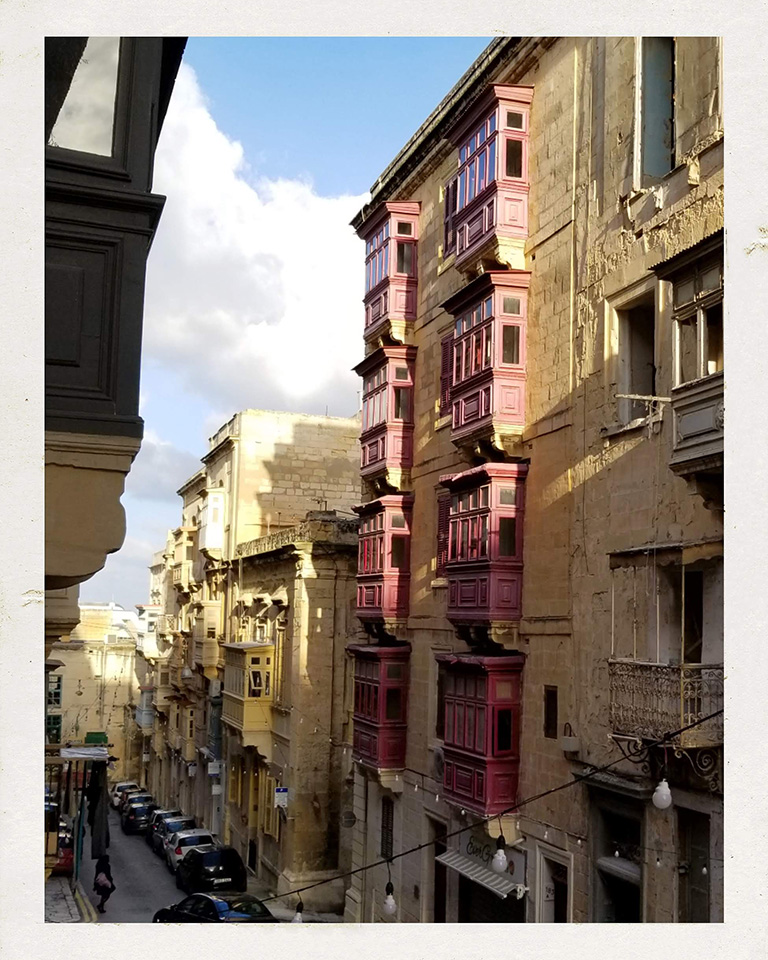
One of the first things we noticed is the number of enclosed Maltese Balconies. Our apartment, inside a building constructed in the early 1700s, has one too. Generally the balconies are enclosed on the tops and sides, with small windows, but beyond that there is much creativity in the styles and colours.
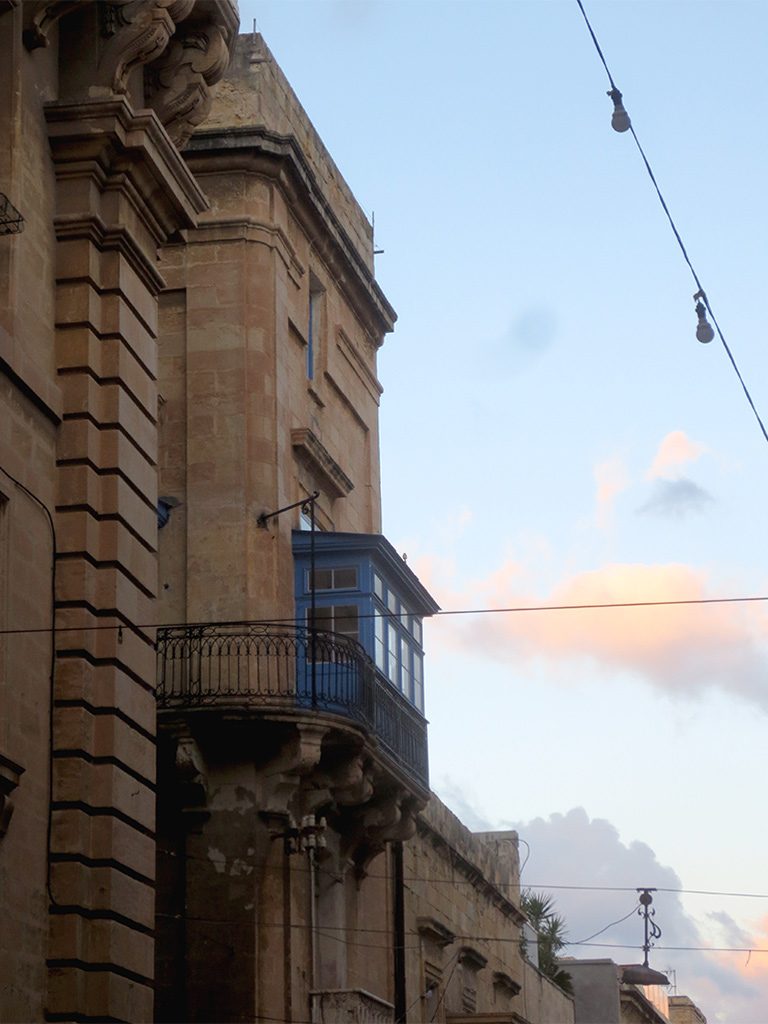
Because the streets of Valletta are laid out on a grid on a narrow peninsula, almost every street ends at the sea.
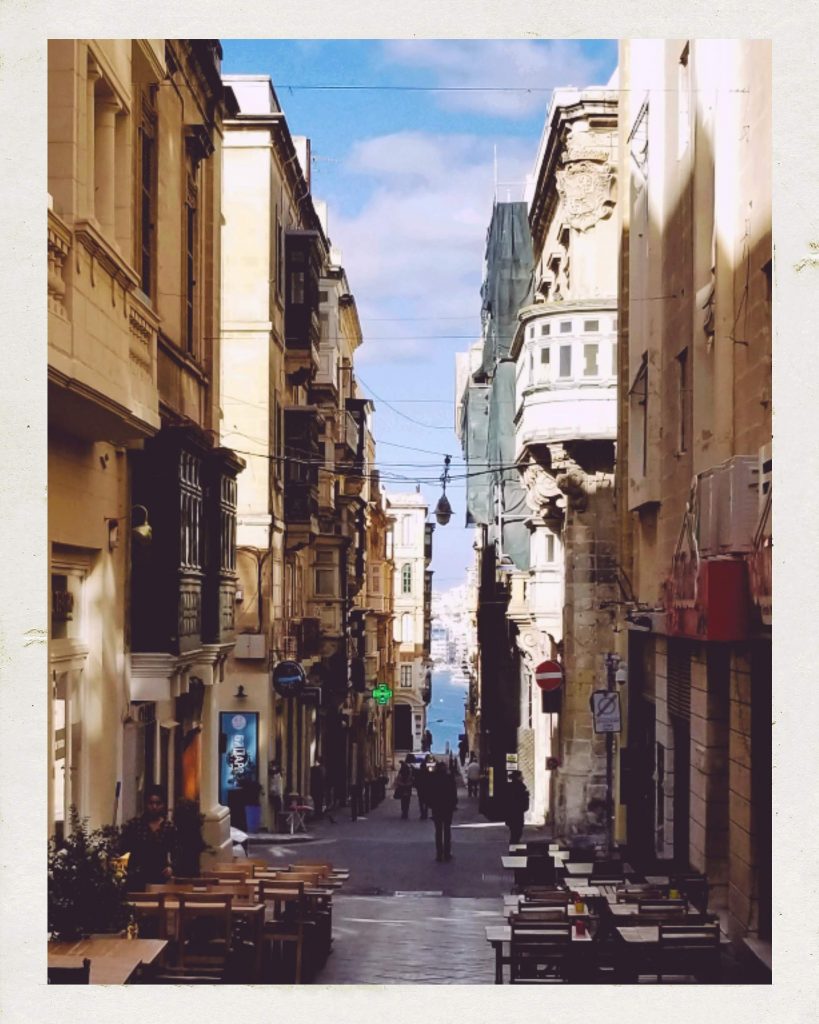
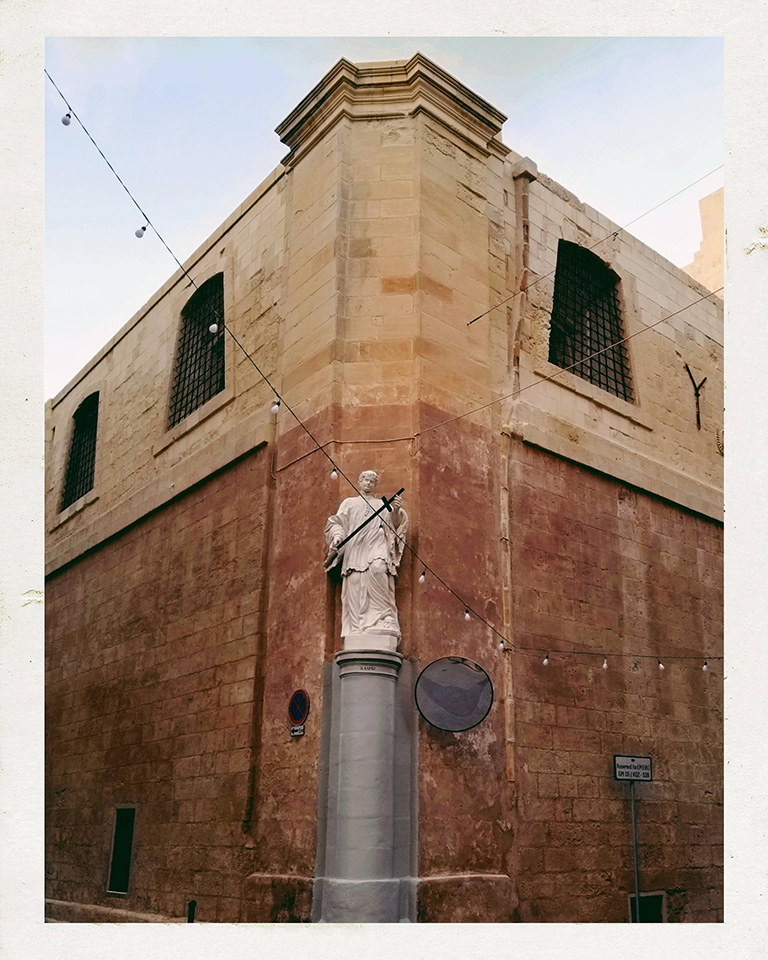
Another common sight around Valletta are small religious shrines built into the corners of buildings. Most honour the Virgin Mary or other Catholic saints. The origins of these apparently date back to the Knights Hospitaller, who decreed that all building corners be rounded and contain a shrine or other decoration.
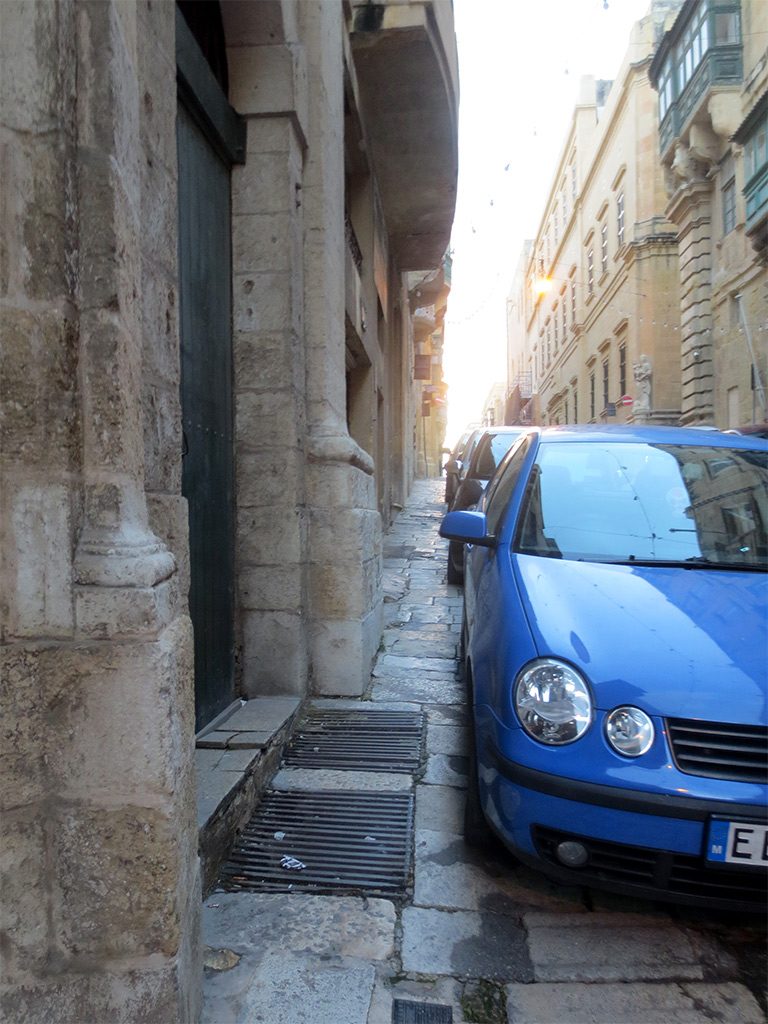
Fitting modern life into 16th century streets makes for some compromises, especially since the Maltese love their cars and drive them with much, er, confidence. While most of the main streets of Valletta are thankfully pedestrianised, those that aren’t are filled with creatively parked cars. Pedestrians get to squeeze through the remaining gaps, if there are any.
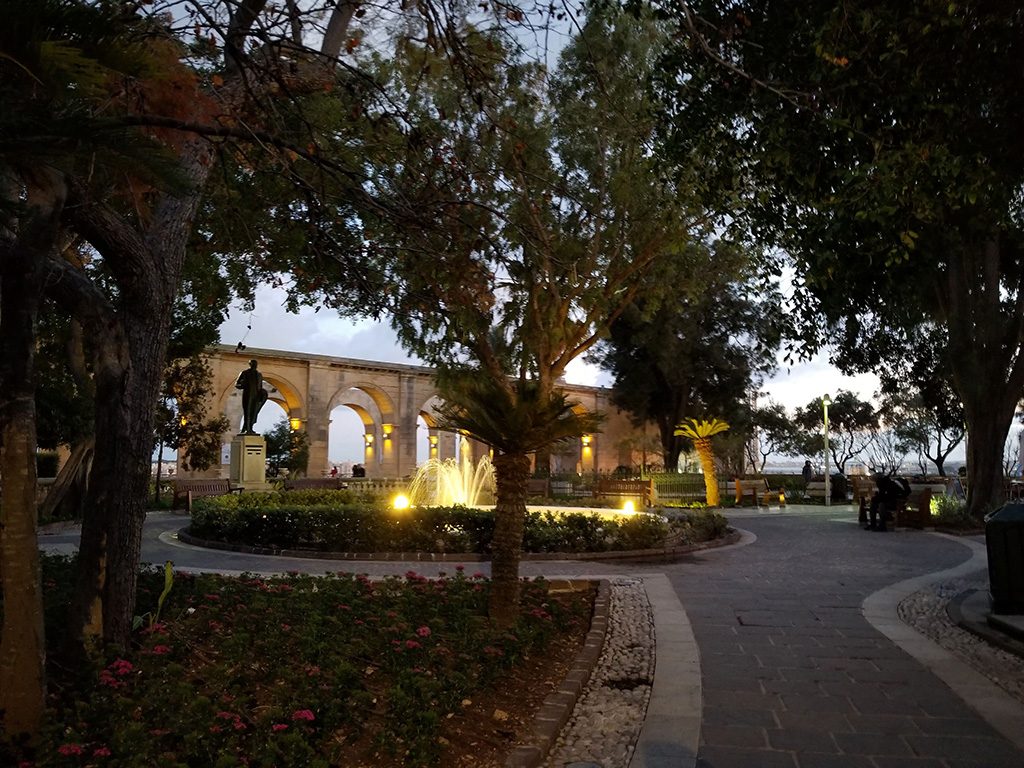
From our street we wandered through the heart of Valletta and made our way to the Upper Barrakka Gardens, hoping that the setting sun would allow for some good photos. This beautiful garden was constructed in the 1560s and opened to the public in 1800.
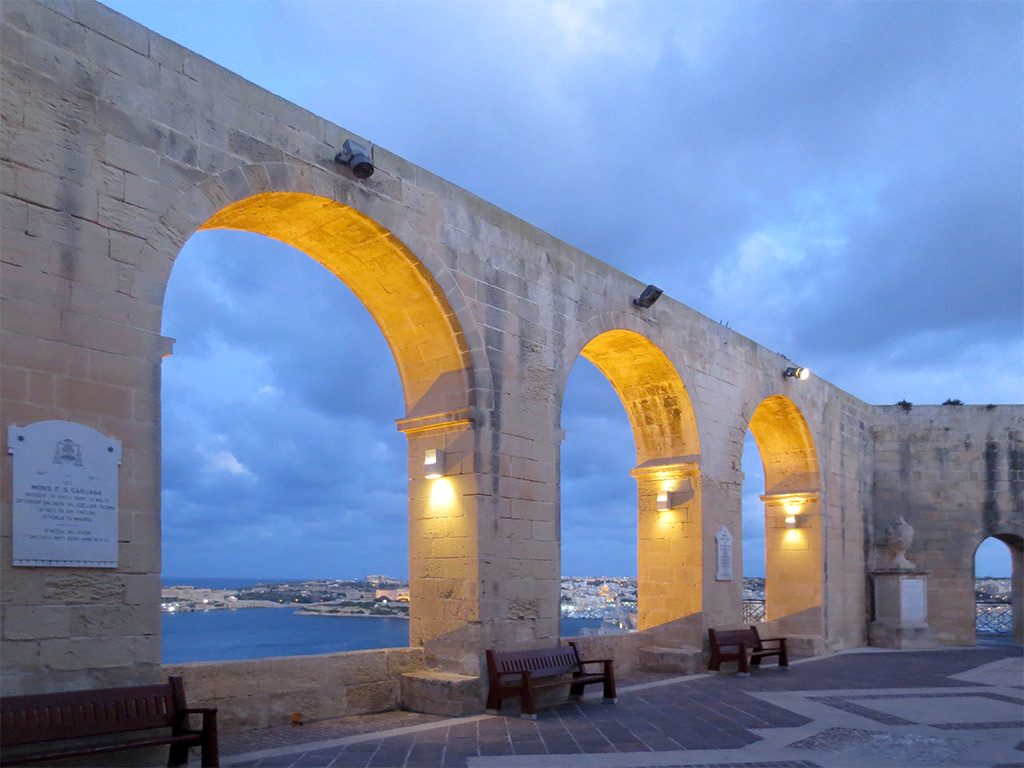
The gardens consist of ornate arches around a central area that contains a fountain, plantings, and even a little kiosk selling beer and coffee by day. The views through the arches show the Three Cities located across the harbour.
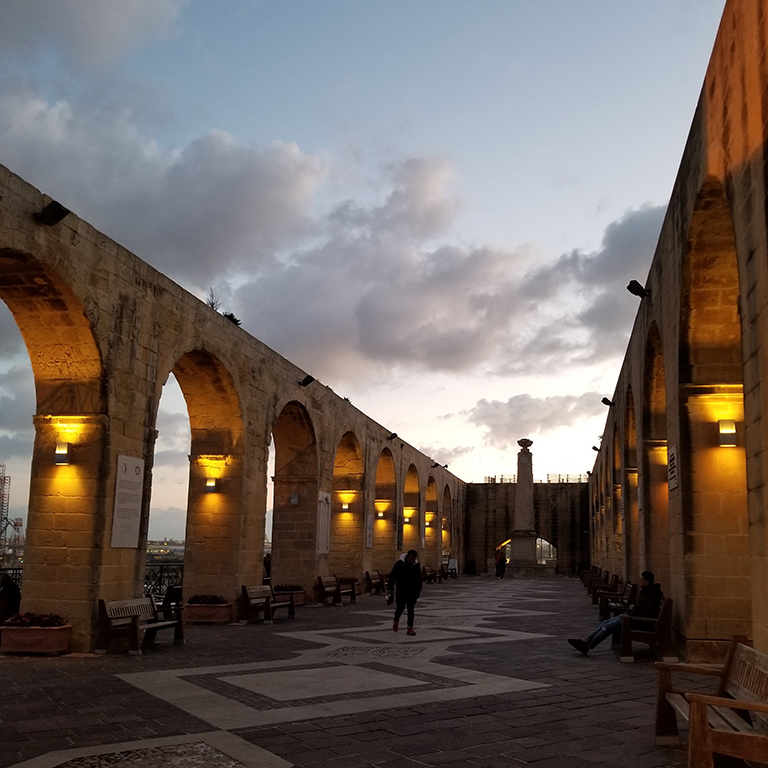
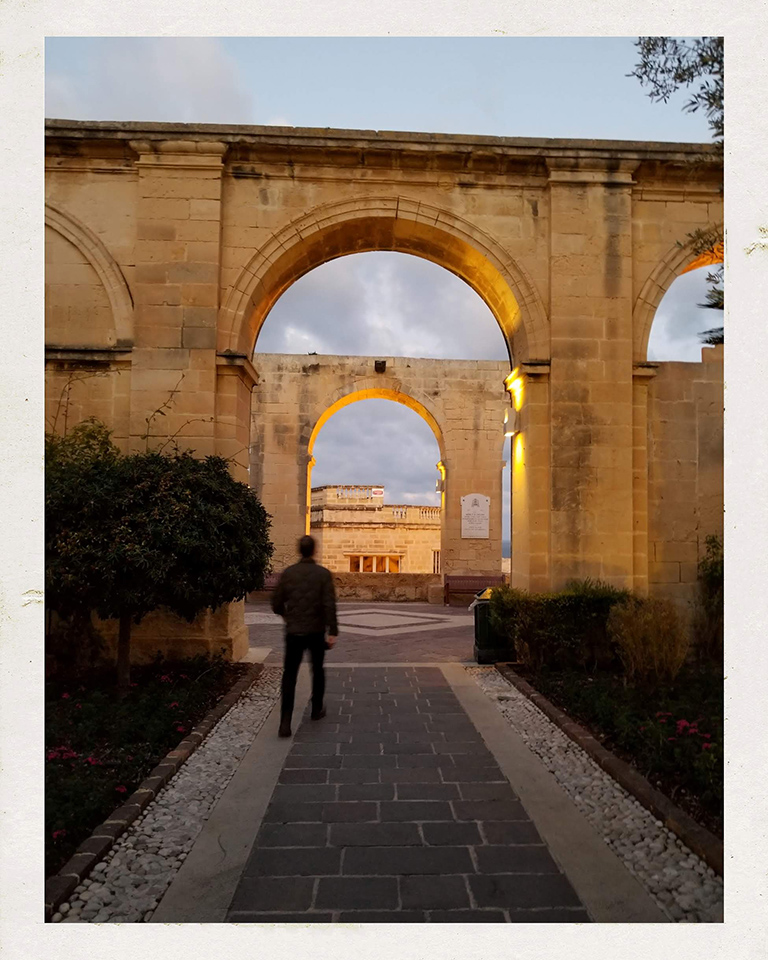
Slightly below the gardens is the Saluting Battery where the guns are fired daily.
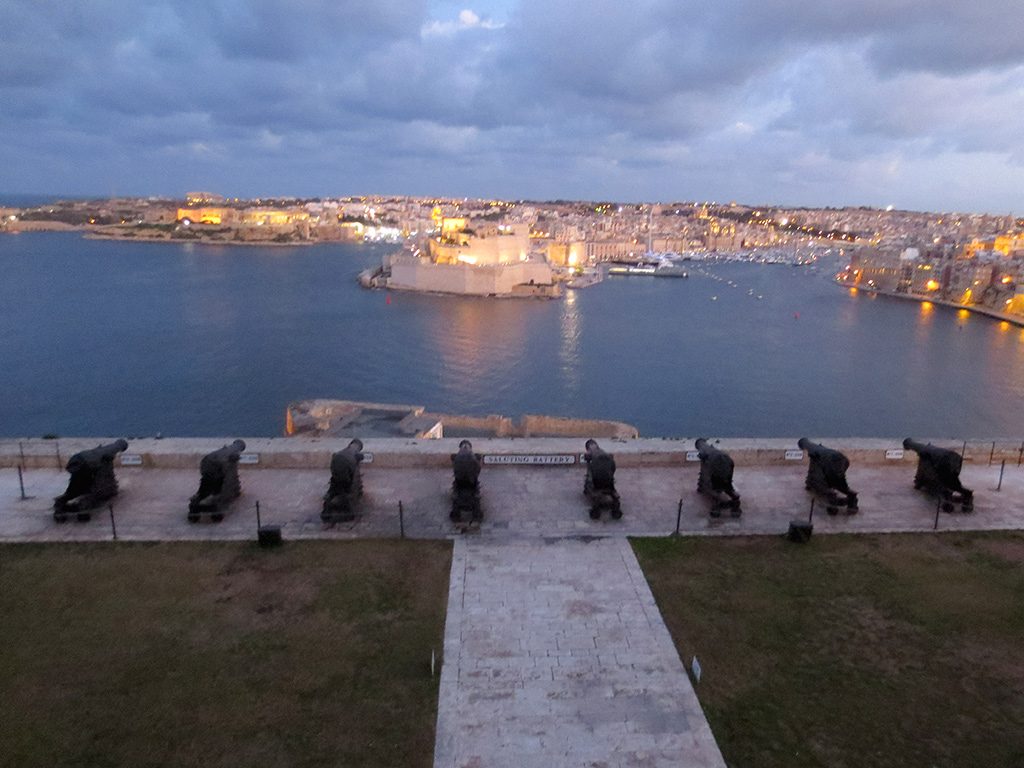
Adjoined to the gardens is the Barrakka Lift. This modern external elevator was constructed in 2012 to replace a historic but defunct one that had stood for decades. It whisks people up and down the 58 meter drop between the gardens and the port below, where ferries depart for the Three Cities.
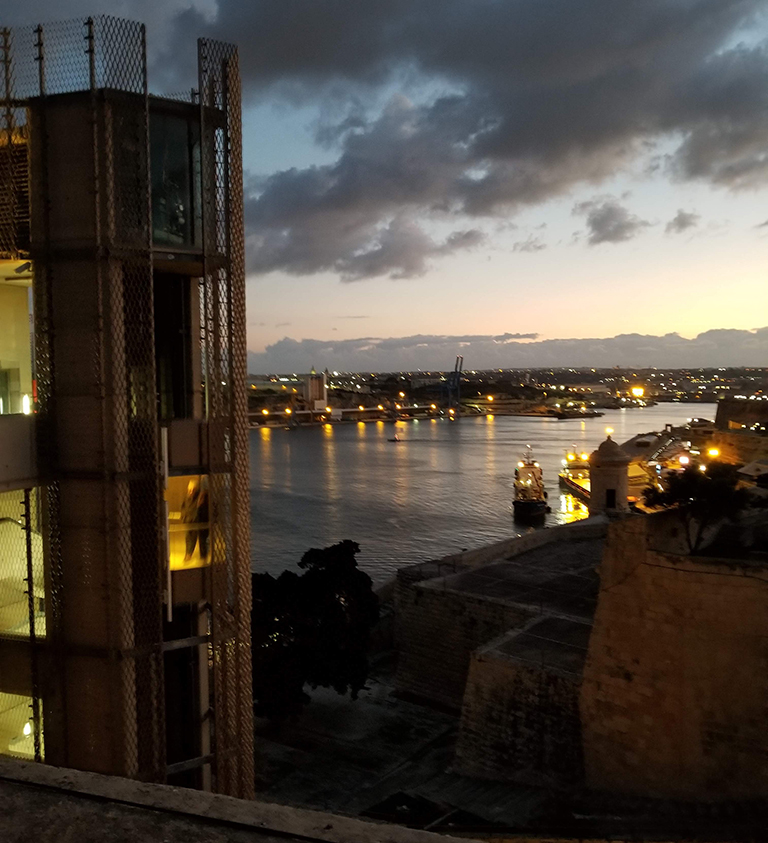
Also abutting the gardens is the quaint building housing the Malta Stock Exchange. Presumably most of the real business happens online these days.
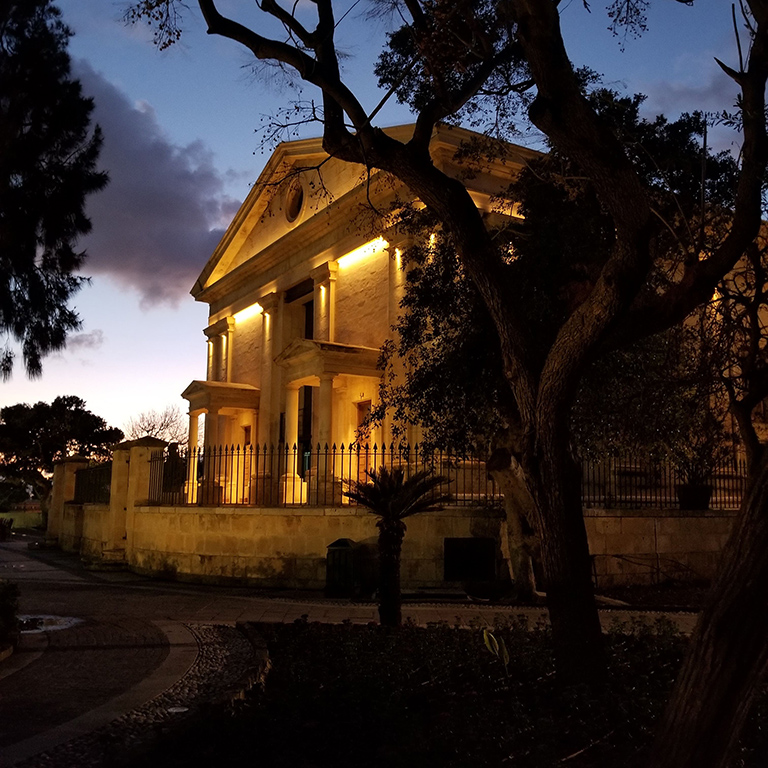
A cat was lounging along the fence of the stock exchange, warily eyeing a man operating a noisy leaf blower nearby.
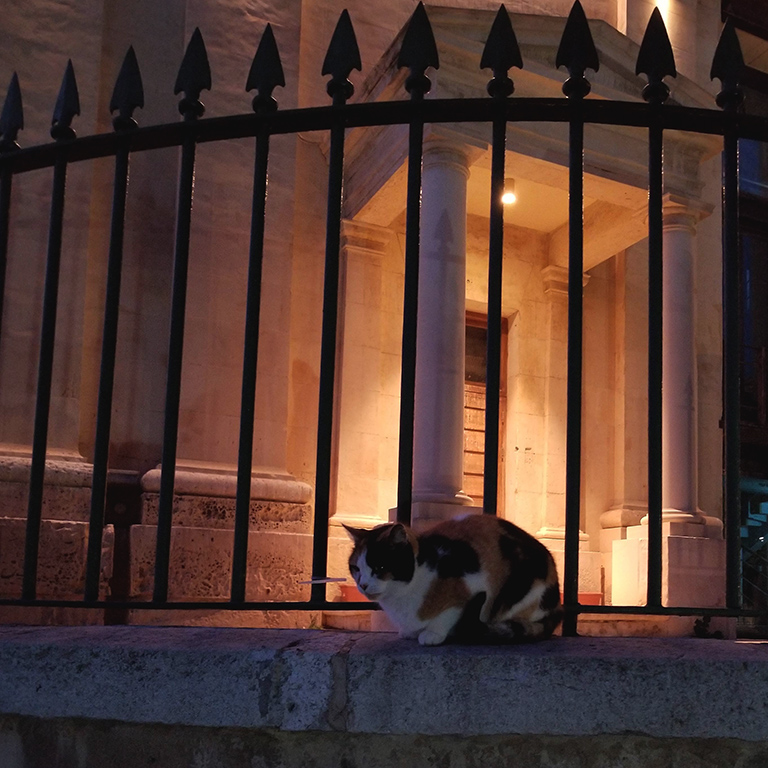
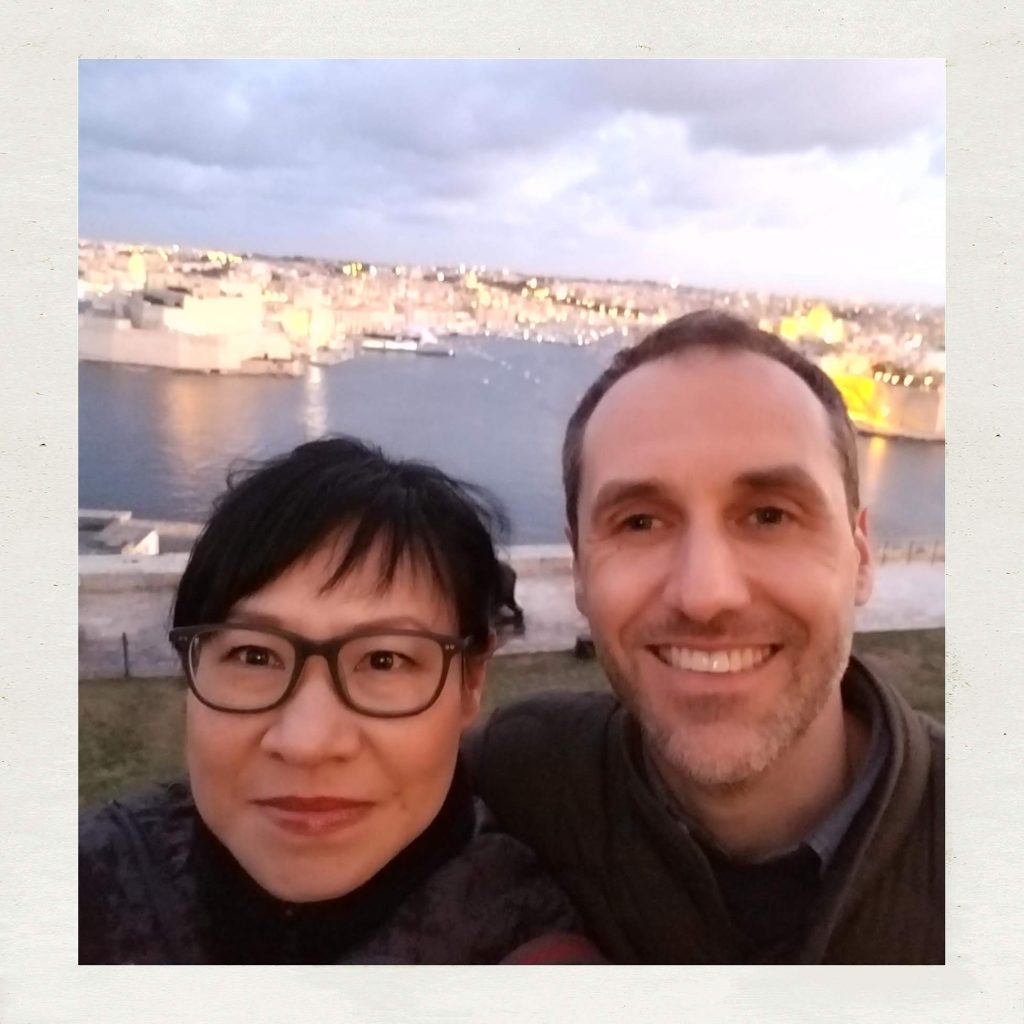
As darkness set in, we headed back towards our apartment, stopping at the brand new Is-Suq tal-Belt (Valletta Food Market) for dinner on the way.
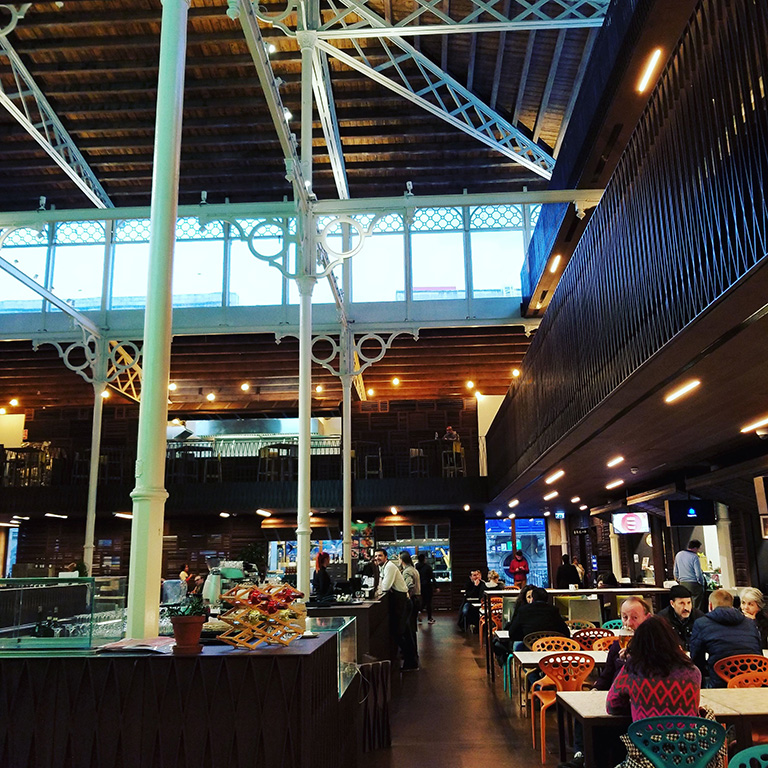
A market had been located on this location for centuries, but after bombing damage in WWII it had been rebuilt in a historically inaccurate manner, and had gradually fell into disuse. Recently over €14 million was invested to totally refurbish and modernize the market. It re-opened in January of 2018 and now has dozens of stylish food vendors around the outside and a large shared bar in the middle. There’s also an enormous screen for watching public events, or more often, football.
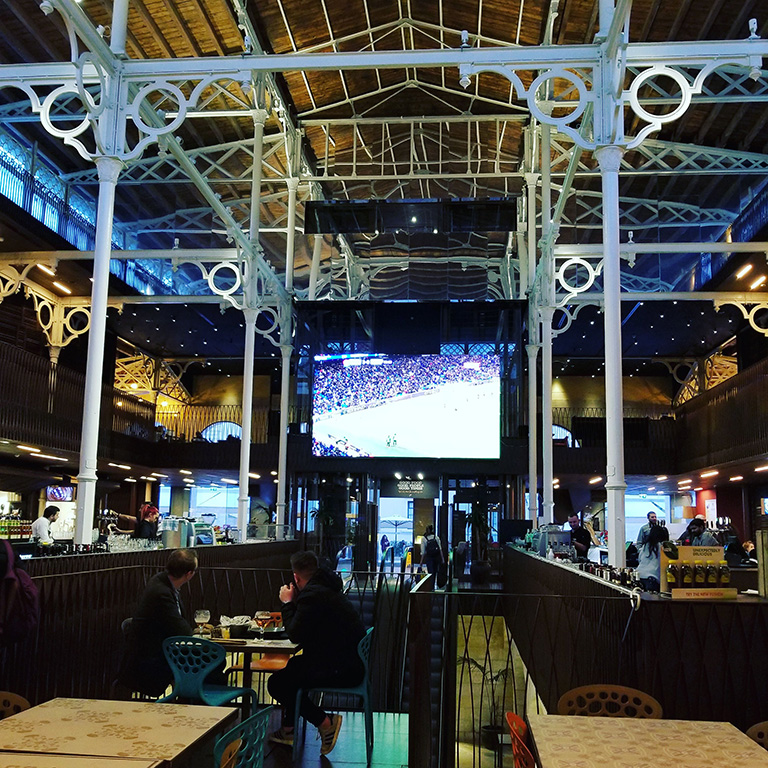
We enjoyed some excellent pasta and pizza from Impasta and Vecchia Napoli. While our food was good, we were wowed by the enormous calzone the guy next to us ordered. It was the size of a football and seemed to be draped with about half a pound of pancetta.
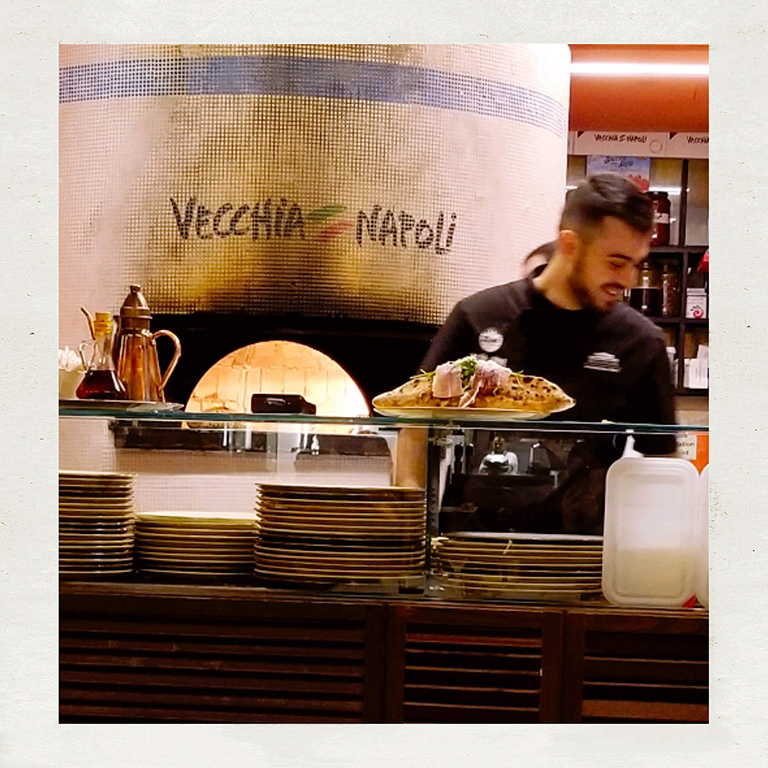
The market attracts many tourists and visitors, but we were happy to see that many locals were also eating and drinking there. While everyone speaks English, amongst themselves they chat in Maltese (Malti) which is one of the most unique languages still spoken in Europe, descending from an extinct variety of Arabic.